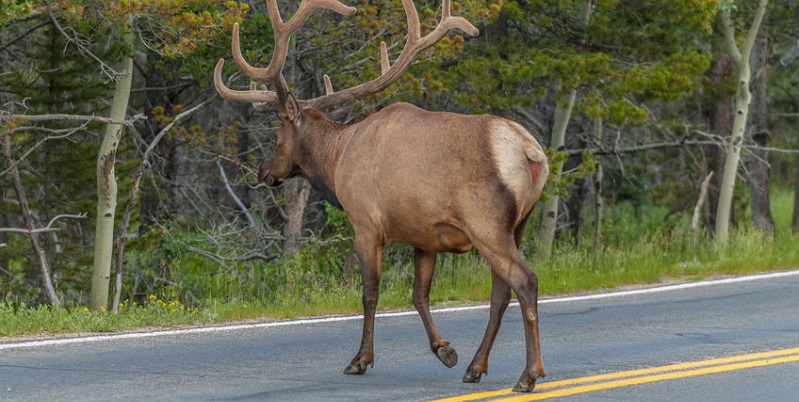Collisions between vehicles and wildlife cost the Colorado economy about $68 million a year. What’s the state doing to reduce the burden to animals and people?
For more than a century, deer, elk, and smaller wildlife have paid with their lives for man’s need to move fast on highways in automobiles. Now some Colorado wildlife is getting a break from the carnage, thanks to roads built with them in mind. State transportation officials are planning more.
Agency leaders and other stakeholders met recently in Silverthorne to develop the strategies that may be factored into future construction and to modify existing roads, according to reporting by The Summit Daily newspaper.
A Bloody End for Wildlife, People
Summit County and all of western Colorado accounted for more than 60 percent of the estimated 7,000 animal deaths from traffic in 2016, according to Colorado Department of Transportation data. Summit County had the most with nearly 2,100 roadkills, and about 81 percent of those were elk or deer.
Those auto accidents also resulted in two human deaths and nearly 400 injuries. The wildlife casualties have increased by nearly 50 percent over the past four years. The newspaper report identified specific hot spots for vehicle-animal collisions: the areas between Silverthorne and Green Mountain Reservoir, and on I-70 between Summit and Vail Pass. The surging numbers and areas of concentration are pushing state officials to find ways to reduce the number of incidents.
Animal Crossings Prove Successful
Although animal road deaths are a rising problem across Colorado, the state has a head start on the West Slope, said Mike Vanderhoof, a CDOT environmental and planning manager.
In 2015, CDOT and Colorado Parks and Wildlife started a $40 million wildlife protection project in nearby Grand County. The agency installed seven animal crossings at trouble spots along 10.4 miles of State Highway 9. First, three underpasses and one overpass near Kremmling and then, in 2016, two underpasses and one overpass near the reservoir.
Wildlife officials have monitored thousands of animals — elk, deer, moose, bobcats, coyotes, and foxes — using the crossings and avoiding deadly traffic. Regular counts of roadkill carcasses have dropped 87 percent, from the average of 64 per year to just eight after construction ended.
Michael Lewis, CDOT’s deputy director said at the meeting in Silverthorne:
“The funding is a challenge. It has always been a challenge. Nobody is going to come in and throw bags of money on the table and say, ‘We’ve got you covered, go and solve this.’ “
To make progress, state, local, and federal agency leaders need to cooperate to prioritize problem areas and find creative solutions.
“We are absolutely arm-in-arm with CDOT right now,” said Bob Broscheid, director of CPW. “We’re both in the same position with priorities with where the money is going to go, but we’re trying to find solutions.”
At a Deer Cost
Colorado has the greatest number of elk in the United States, an estimated 278,000, and one of the biggest deer populations, about 419,000 after each hunting season, the Summit Daily reported. Large-game hunting creates about $919 million in business income annually. Wildlife watchers are credited with an estimated $2.3 billion in spending each year. But at the same time, reported vehicle-animal collisions cost the economy more than $68 million per year.
Collisions between cars and deer across the United States cause an average 200 human deaths and cost the country an estimated $4 billion per year, according to the industry Web page Insurance Journal. The industry counted 1.23 million deer-vehicle crashes between July 2011 and June 2012.
The journal blamed the increasing problem on urban sprawl and new roads cutting through wildlife areas, which are displacing the animals and bringing them into closer contact with people. Deer migration and mating seasons, when drivers are at the greatest risk of hitting one of the animals, usually run from October to December.
Collisions with wildlife are covered under drivers’ comprehensive insurance policies, but not under collision insurance, the journal said.
From mid-2011 to mid-2012, the average insurance claim for deer-vehicle crashes was $3,305, a 4.4 percent year-over-year increase.

